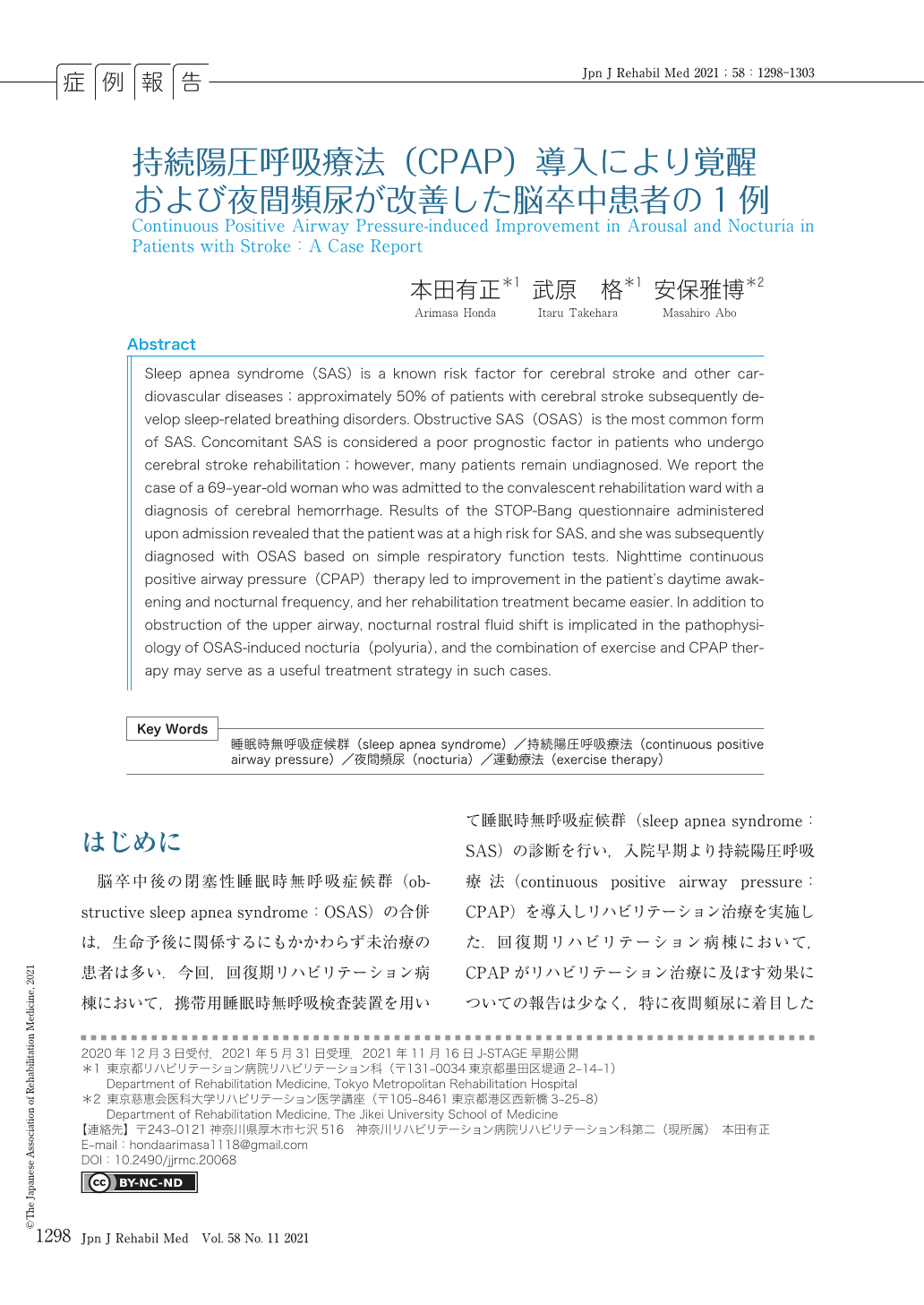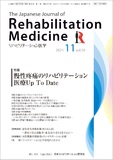Japanese
English
- 販売していません
- Abstract 文献概要
- 1ページ目 Look Inside
- 参考文献 Reference
はじめに
脳卒中後の閉塞性睡眠時無呼吸症候群(obstructive sleep apnea syndrome:OSAS)の合併は,生命予後に関係するにもかかわらず未治療の患者は多い.今回,回復期リハビリテーション病棟において,携帯用睡眠時無呼吸検査装置を用いて睡眠時無呼吸症候群(sleep apnea syndrome:SAS)の診断を行い,入院早期より持続陽圧呼吸療法(continuous positive airway pressure:CPAP)を導入しリハビリテーション治療を実施した.回復期リハビリテーション病棟において,CPAPがリハビリテーション治療に及ぼす効果についての報告は少なく,特に夜間頻尿に着目したものはない.今回CPAPを導入することで良好な帰結が得られた症例を経験したので報告する.
Sleep apnea syndrome (SAS) is a known risk factor for cerebral stroke and other cardiovascular diseases;approximately 50% of patients with cerebral stroke subsequently develop sleep-related breathing disorders. Obstructive SAS (OSAS) is the most common form of SAS. Concomitant SAS is considered a poor prognostic factor in patients who undergo cerebral stroke rehabilitation;however, many patients remain undiagnosed. We report the case of a 69-year-old woman who was admitted to the convalescent rehabilitation ward with a diagnosis of cerebral hemorrhage. Results of the STOP-Bang questionnaire administered upon admission revealed that the patient was at a high risk for SAS, and she was subsequently diagnosed with OSAS based on simple respiratory function tests. Nighttime continuous positive airway pressure (CPAP) therapy led to improvement in the patient's daytime awakening and nocturnal frequency, and her rehabilitation treatment became easier. In addition to obstruction of the upper airway, nocturnal rostral fluid shift is implicated in the pathophysiology of OSAS-induced nocturia (polyuria), and the combination of exercise and CPAP therapy may serve as a useful treatment strategy in such cases.

Copyright © 2021, The Japanese Association of Rehabilitation Medicine. All rights reserved.


